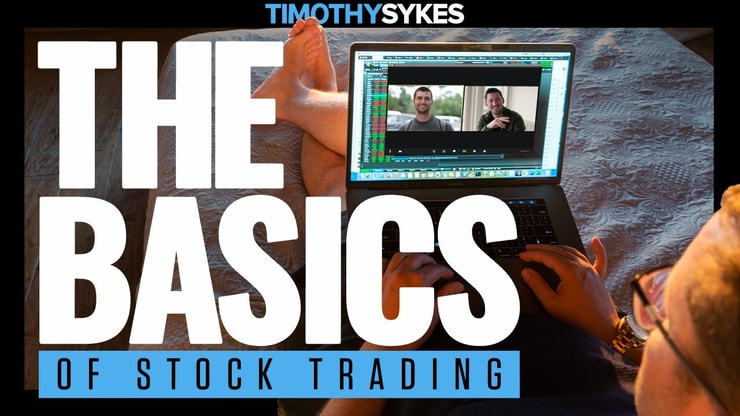The Dow Jones Industrial Average (DJIA), often simply referred to as ‘the Dow’, is a price-weighted average of 30 significant stocks traded on the New York Stock Exchange (NYSE) and the Nasdaq. Established by Charles Dow on May 26, 1896, it is one of the oldest and most-watched indices in the world.
The DJIA provides an indicator of the overall health of the U.S. economy. As a financial professional or investor, it’s essential to understand the function and impact of this influential index. It’s not just about knowing the state of play on Wall Street, but also grasping its effects on small businesses, loan rates, and the health of the entire financial sector.
Keeping tabs on the Dow’s performance can influence decisions across numerous industries, from real estate to insurance sectors. Whether you’re looking for a place to start making sense of the market or just saving for retirement, the DJIA matters to you.
Here’s my guide to this stock index, with an explanation of its history, trading products, and economic data it’s based on. Read on for the content!
Table of Contents
- 1 First Things First: What Is the Dow Jones Industrial Average (DJIA)?
- 2 Why Is it Called Dow Jones?
- 3 What Does the Dow Jones Industrial Average Measure?
- 4 How Do they Calculate the Value of the Dow Jones Industrial Average?
- 5 What Are the Companies Listed in the Dow Jones?
- 6 How Can I Invest in the DJIA?
- 7 Key Takeaways
First Things First: What Is the Dow Jones Industrial Average (DJIA)?

2025 Millionaire Media, LLCThe Dow Jones Industrial Average (DJIA) is a stock market index, representing the stock performance of 30 large publicly traded companies, or “blue chips,” based in the United States. It’s one of several indices owned by S&P Dow Jones Indices, a joint venture majority-owned by S&P Global.
The DJIA doesn’t encompass all aspects of the U.S. economy, but it does provide a snapshot of how these large, influential companies perform. The companies included are titans across various sectors such as technology, finance, health, and consumer goods.
How these companies perform can influence everything from our 401(k)s and mutual funds to the stability of the job market. Given their massive reach, the performance of these companies can also impact sectors not directly tied to the stock market, like real estate and small business.
The DJIA is just one of many stock market indices that investors use to gauge market performance. These indices can provide valuable insights into different sectors of the market, helping investors make informed decisions. If you’re interested in expanding your understanding of these tools, take a look at our comprehensive guide on stock market indices.
Why Is it Called Dow Jones?

2025 Millionaire Media, LLCThe Dow Jones Industrial Average derives its name from its founders, Charles Dow, a seasoned financial journalist, and Edward Jones, a statistician. The pair had already established Dow Jones & Company in 1882, where they developed indices to track the performance of railroads and industrial companies.
Charles Dow’s work laid the foundation for technical analysis in the stock market. His initial index, launched in 1884, tracked the performance of nine railroad companies along with two industrial companies. The DJIA, as we know it today, started operation in 1896.
The ‘Industrial’ part of the name is somewhat misleading. The index includes companies from various sectors, like Microsoft in information technology, Johnson & Johnson in health care, and American Express in credit cards, not just traditional “industrial” companies.
More Breaking News
- Oscar Health Inc. Shares Plummeting Dramatically!
- Avino Silver & Gold Mines Ltd. announces equity program renewal amid market shifts
- AG Shares Rally: Buy, Hold, or Sell?
What Does the Dow Jones Industrial Average Measure?
The Dow Jones Industrial Average measures the market performance of 30 major U.S. companies across various industries. But it’s not merely a sum of the stock prices of these companies. The DJIA uses a price-weighted methodology, which means companies with higher share prices have a greater weight in the index.
A significant move in the share price of a company like Boeing or IBM, which have high share prices, can have a substantial impact on the DJIA. The index serves as a useful indicator of economic health, investor sentiment, and market trends, influencing decision-making in sectors ranging from finance to insurance.
However, the DJIA only provides a snapshot. It doesn’t capture every nuance of the U.S. economy or the stock market. The index doesn’t account for market capitalization or industries not represented by the 30 companies.
While the DJIA provides a snapshot of the U.S. economy, it’s not the only index that investors should consider. The S&P 500, for example, includes a broader range of companies, which can provide a more comprehensive view of the market. If you’re curious about the benefits of investing in the S&P 500, check out our detailed guide on the subject.
How Do they Calculate the Value of the Dow Jones Industrial Average?
The Dow Jones Industrial Average is calculated by adding up the stock prices of all 30 companies and then dividing by a number known as the Dow Divisor. But it’s not as simple as that.
This Dow Divisor adjusts for events like stock splits, spinoffs, or structural changes to maintain consistency in the index. So, if a company within the DJIA splits its stock, the divisor is adjusted so that the DJIA doesn’t jump or drop. This approach ensures the DJIA’s historical continuity, making comparisons with the past more accurate and meaningful.
This calculation method, called price-weighting, gives more influence to companies with higher stock prices. A significant price change in a high-priced stock like Goldman Sachs or 3M Company will have a greater impact on the DJIA than an equivalent change in a lower-priced stock like Cisco Systems.
What Are the Companies Listed in the Dow Jones?

2025 Millionaire Media, LLCThe Dow Jones Industrial Average includes 30 large-cap U.S. companies. They represent a diverse range of sectors, such as technology, finance, consumer goods, and healthcare.
As of 2023, the 30 companies in the DJIA include:
- Apple Inc. (NASDAQ: AAPL)
- Microsoft Corp (NASDAQ: MSFT)
- IBM (NYSE: IBM)
- Johnson & Johnson (NYSE: JNJ)
- Goldman Sachs Group Inc. (NYSE: GS)
- Coca-Cola Co. (NYSE: KO)
- American Express Co. (NYSE: AXP)
- Boeing Co. (NYSE: BA)
- Cisco Systems Inc. (NASDAQ: CSCO)
- 3M Co. (NYSE: MMM)
- Intel Corporation (NASDAQ: INTC)
- UnitedHealth Group Inc. (NYSE: UNH)
- Nike Inc. (NYSE: NKE)
- Home Depot Inc. (NYSE: HD)
- Walmart Inc. (NYSE: WMT)
- McDonald’s Corp (NYSE: MCD)
- Salesforce Inc. (NYSE: CRM)
- Chevron Corporation (NYSE: CVX)
- Merck & Co Inc. (NYSE: MRK)
- Amgen, Inc. (NASDAQ: AMGN)
Bear in mind, these aren’t necessarily the largest companies by market cap. They’re chosen by the editors of the Wall Street Journal. The selection is based on factors such as reputation, growth, and interest to investors. Therefore, additions can be made over time, based on the economy’s evolution and trading volume, and the rise and fall of different industries.
If you’re looking for more diversity, the Nasdaq Composite includes a wider array of companies from various sectors. This can provide a more comprehensive view of the market, particularly if you’re interested in the tech sector. To learn more about the Nasdaq Composite and how it compares to the DJIA, check out our article on the Nasdaq Composite.
How Can I Invest in the DJIA?
Investing in the DJIA isn’t as straightforward as buying shares in a single company. However, there are ways to gain exposure to the performance of the DJIA through exchange traded funds (ETFs) and index funds.
ETFs like the SPDR Dow Jones Industrial Average ETF (DIA) and index funds such as the Vanguard Industrial Average Mutual Fund (VIDIAX) track the performance of the DJIA. By investing in these funds, you’re essentially buying into a portfolio that mimics the DJIA’s composition and performance.
Remember, investing in the stock market, whether through individual stocks or funds, comes with risks. Before investing, it’s important to consider your financial situation, investment goals, and risk tolerance. Consider consulting with brokers or doing extensive research on your own.
Key Takeaways

2025 Millionaire Media, LLCThe Dow Jones Industrial Average is a significant barometer of the U.S. economy and investor sentiment. It provides a snapshot of the financial performance of 30 significant U.S. companies, influencing sectors from real estate to small businesses.
It’s crucial for investors and financial professionals to understand the DJIA’s role and how it’s calculated. Despite its limitations, the DJIA’s historical continuity offers valuable insights into the health and direction of the U.S. economy.
By investing in funds that track the DJIA, investors can gain exposure to these 30 major companies, spanning various sectors. However, like any investment, it’s important to consider the risks and do your due diligence.
Trading isn’t rocket science. It’s a skill you build and work on like any other. Trading has changed my life, and I think this way of life should be open to more people…
I’ve built my Trading Challenge to pass on the things I had to learn for myself. It’s the kind of community that I wish I had when I was starting out.
We don’t accept everyone. If you’re up for the challenge — I want to hear from you.
Apply to the Trading Challenge here.
Trading is a battlefield. The more knowledge you have, the better prepared you’ll be.
Do you watch the DJIA? Let me know in the comments — I love hearing from my readers!









Leave a reply